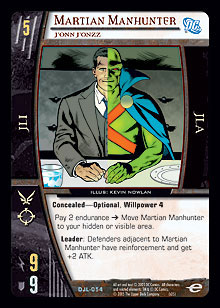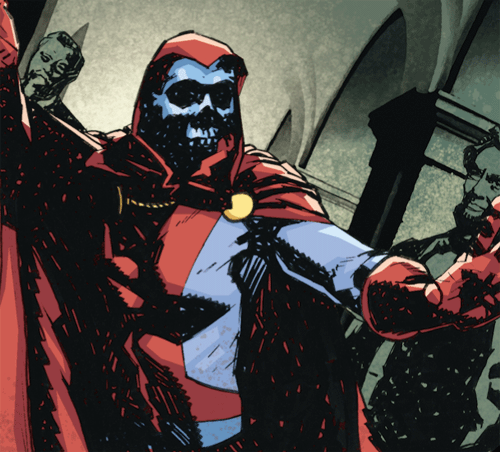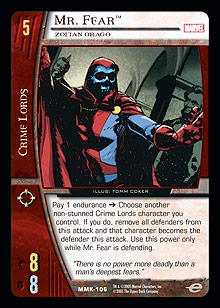
Well, it certainly has been quite the eventful week for me. I finally received the word from on high (i.e., Lord Toby Wachter) that I would be part of the Metagame.com coverage team for the next Pro Circuit. While that does mean that I won’t be engaging in any of the intense Vs. System play over the three days of PC: Indy or the $10K, I will get plenty of time in the Feature Match Area nonetheless! Looks like I’ll need to sharpen my typing skills if I plan to keep up with all of the action.
This recruitment to the Metagame.com coverage team is definitely a blessing given the other news that I received. My employer is about to engage in a rather large project in Alabama, and they will be drawing associates from all over the world to work on it. I was fortunate enough to get recruited to work on the project through the next six months. By the time you read this, I will be hard at work in the home state of smilin’ Dave Spears. Sure . . . the excessive travel stinks, but it is far better than being forced back onto the audit rotation for another six months!
However, being away from home every weekday for the next six months will make it difficult for me to put in the requisite practice time for the upcoming Pro Circuits. While I do enjoy playing in the PCs, I tend to enjoy them a lot more when I am actually prepared. So, being a part of the coverage team is the best of both worlds for me: I get to go to the Pro Circuit and Gen Con Indy, but I don’t have to worry about finding time to test the DC Modern format or learn how to draft Infinite Crisis.
Never fear! Though I may be many, many miles away, I will still be around breaking cards for some time to come. Who knows? Maybe my jaunt into Donkey Club territory will inspire some new and innovative creations.
And now . . . back to the Golden Age
Meet Travis McFadden:

Travis is your average, everyday, fourteen-year-old kid. He enjoys Vs. System, his X-Box 360, and messing with the minds of local players¾pretty much the norm for any guy his age.
Travis also happens to be one of the most talented deckbuilders that I have ever met. This is indeed saying something, considering the concentration of innovative deckbuilders in the Dallas area. Travis rarely plays any mainstream decks, instead opting to find new and imaginative ways to exploit team combinations. In fact, Travis independently built a Villains United / X-Statix deck that was only four cards different from the one I presented in my column a couple of weeks ago. Great minds do think alike . . . it’s true, it’s true!
 But my all-time favorite creation of Travis’s is his “GLEE Lords” deck. This deck was, in fact, the inspiration for my JLI / Crime Lords build featuring Martian Manhunter, J’onn J’onzz. Prior to that, some of you may recall my passing mention of this deck from a previous article. Had the Green Lantern Corps been legal for play at PC: New York last year, this deck could very well have had its way with the Curve Sentinel—infested field. GLEE Lords demolished Sentinels in a way that was just wrong!
But my all-time favorite creation of Travis’s is his “GLEE Lords” deck. This deck was, in fact, the inspiration for my JLI / Crime Lords build featuring Martian Manhunter, J’onn J’onzz. Prior to that, some of you may recall my passing mention of this deck from a previous article. Had the Green Lantern Corps been legal for play at PC: New York last year, this deck could very well have had its way with the Curve Sentinel—infested field. GLEE Lords demolished Sentinels in a way that was just wrong!
The premise of the deck is similar to G’Lock initially. The early game engine uses Kyle Rayner, Last Green Lantern and Dr. Light, Master of Holograms to establish board control and set up your hand. Malvolio is the preferred 4-drop, as his enormous 10 DEF is difficult for even the biggest 4- and 5-drops to pierce.
Turn 5 is where the deck gets goofy. Instead of leaning on the endurance gain ability of Katma Tui, the deck steps in a different direction by putting Mr. Fear into play. While certainly small as 5-drops go, Mr. Fear’s effect essentially dictates that an opponent won’t be able to attack Mr. Fear unless you want him or her to.
Turn 6 is where the deck becomes brutal and brilliant. Assuming that the GLEE Lords player can keep his or her board somewhat intact, Sinestro, Green Lantern of Korugar hits play to really mess with the game. Now, not only can you redirect attacks from Mr. Fear, but you can also start stunning your opponents’ attackers nearly every attack. If your opponent attacks with a smaller character, then you redirect to one of your larger defenders, like Malvolio or Sinestro. But if an opponent attacks with one of his or her larger characters, then you simply direct the attack to a smaller character on your side of the board (hopefully reinforced by Catcher’s Mitt). It can get pretty nasty when Bastion is forced to take a stunback from Roscoe Sweeny!
Of course, PC: LA brought us the advent of much stronger early-game decks, like Squadron Supreme and Avengers reservists. Even with an assortment of clever defensive tricks, the GLEE Lords deck had a hard time competing with these aggressive powerhouses. Thus, it was set on the proverbial playtesting shelf.
Fast forward to April 2006 at the $10K in Austin, TX. Travis took part in the Scholarship Tournament that was held at the tournament site. In a field full of Doom variants, Squadron, Anti-Green Lantern rush, and traditional G’Lock, Travis managed to snag first place for his age group with his unconventional GLEE Lords deck. While the build evolved somewhat to incorporate cards from newer sets, the same basic premise was there: use Mr. Fear to redirect attacks to preferred targets. It worked and served well enough to net him a cool $1,000 scholarship.
While this deck may not become the next big thing, it is both clever and fun¾two traits that make it a success in my book. So, we’re going to take a look at how Mr. Fear, in unison with the usual GLEE suspects, can make you giggle with delight and your opponents weep with frustration.

The Build
As has become the norm when featuring the decks of other players, I will present the deck first, then discuss some of the choices afterward.
GLEE Lords (60 cards)
By Travis McFadden
Characters (29)
2 G’Nort, Green Lantern of G’Newt
1 Roscoe Sweeny, Fixer
1 Roy Harper à Speedy, Mercurial Marksman
2 Salakk, Green Lantern of Slyggia
2 Doctor Sun, Creator of Project: Mind
4 Kyle Rayner, Last Green Lantern
4 Dr. Light, Master of Holograms
4 Malvolio, Lord of the Green Flame
1 Oliver Queen à Green Arrow, Emerald Archer
4 Mr. Fear, Zoltan Drago
2 Sinestro, Green Lantern of Korugar
1 Magneto, Master of Magnetism
1 Mogo, The Living Planet
Plot Twists (22)
4 Cover Fire
2 Drive-by Shooting
2 Emerald Dawn
2 Enemy of My Enemy
2 Face the Master
1 Millennium
3 No Evil Shall Escape Our Sight, Construct
1 Political Pressure
1 Rain of Acorns, Construct
2 Rough House
2 The Ring Has Chosen
Locations (3)
3 Coast City
Equipment (6)
4 Armed Escort
2 Catcher’s Mitt, Construct
If you have ever piloted a G’Lock deck, then many of these cards will be familiar to you. Obviously, your choices at 1 provide you with a basis for developing your board engine as early as possible. G’Nort has been a fixture in GLEE decks since the archetype was spawned. Giving a +1 ATK / +1 DEF pump to most or all of your characters in play really can’t be overstated. Of course, Salakk is the 1-drop preferred by most G’Lock players. While he has no printed effect, his willpower 2 is indispensable in the early going, as it facilitates searches with The Ring Has Chosen on turns 2 and 3 for Kyle Rayner, Last Green Lantern and Dr. Light, Master of Holograms. The remaining 1-drops, Roy Harper à Speedy and Roscoe Sweeny, are really more targets for Dr. Light activations in later turns. Speedy can take care of pesky opposing 1-drops, while Roscoe Sweeny is a reusable search engine once team-ups between all three of the major teams have been established.
Kyle Rayner and Dr. Light need very little explanation at 2 and 3, respectively. However, Doctor Sun is a nifty little treat that this deck features. While the price of a KO and 2 endurance may be onerous in other decks, the Dr. Light recursion engine effectively turns Doctor Sun into an attack negation every turn for the low, low price of 2 endurance. Since we will usually have reinforcement online in later turns by way of Catcher’s Mitt, Doctor Sun will usually have few impediments stopping him from removing opposing attackers.
Malvolio usually serves as a defensive barrier for opposing attacks at 4. In addition, Oliver Queen à Green Arrow, Emerald Archer is teched into the deck to assist Speedy in case your opponent tries to overwhelm you with 1-drops.
 The combination of Mr. Fear and Sinestro, Green Lantern of Korugar was detailed above. While it is possible to navigate the deck without these characters, they represent the heart and soul of the deck. As such, they are the characters that you would like to see on the board in every game at their respective turns.
The combination of Mr. Fear and Sinestro, Green Lantern of Korugar was detailed above. While it is possible to navigate the deck without these characters, they represent the heart and soul of the deck. As such, they are the characters that you would like to see on the board in every game at their respective turns.
The game-enders are Magneto, Master of Magnetism and Mogo, The Living Planet. Magneto turns your opponent’s stunned characters into board losses, preventing any kind of recovery form happening. And Mogo is . . . well . . . big! Your opponents will usually be forced to devote multiple characters and resources to stunning Mogo. With Sinestro still in play, your opponent will generally be forced to stun every character that he or she attacks with.
The plot twists cover the traditional Golden Age G’Lock suite, including Cover Fire and Rain of Acorns. The plot twists also splash some of the Crime Lords defensive cards, like Rough House and Face the Master. While these defensive pumps are vulnerable to reinforcement-removing effects, such as Other-Earth and No Hope, they are quite effective in unison with Catcher’s Mitt.
Political Pressure is a personal favorite of mine and a nifty tool for keeping rush and combo decks in check. Finally, No Evil Shall Escape Our Sight and Millennium round out the plot twists as much needed Team-Ups for a deck that requires multiple Team-Ups in play to be effective.
As I mentioned last week, Coast City has never been a personal favorite of mine. However, it does have its uses. In a deck that attempts to control where your opponent attacks, Coast City can force your opponents to attack into the characters that you choose to place in the front row. Mr. Fear in front of Sinestro can become quite problematic with Coast City]in play, as your opponent will usually have no safe avenues where he or she can attack without suffering a stunback.
Last but not least, we have the equipment. Catcher’s Mitt is a phenomenal enabler for reinforcement-based DEF pumps like Face The Master. However, the real star of this show is Armed Escort. If your opponent thought that the Mr. Fear / Sinestro combo was annoying before, just wait until you start dropping Armed Escorts into play. Now all equipped characters can redirect attacks toward themselves. This can get particularly crazy in the late turns when a huge team attack on Mogo is redirected toward an Armed Escort—equipped Roscoe Sweeny. Not only will your opponent’s aggression on Mogo fail, but also all of your opponent’s attackers will generally stun back thanks to Sinestro. Once again, Roscoe lays the smack down!
I have watched Travis pilot this deck many times, and I am consistently impressed by its resiliency. However, there do appear to be some consistency issues that stem from a limited amount of character searchers and none of the willpower-based deck cyclers. Given the Silver Age shift to curve, the deck could very easily find a home in the new metagame. Cover Fire would obviously be lost, but this could also free up some space for more copies of The Ring Has Chosen and Enemy of My Enemy. But whether you choose to adapt the deck for competitive purposes or not, it is fun and interesting to say the very least.
The mulligan will generally be for Dr. Light, as he allows for a strong degree of board control and hand advantage. Once you can get your early game engine online, along with enough Team-Ups to support it, then you can recur Roscoe Sweeny with Dr. Light whenever needed to ensure that you hit your curve.
Given the pitfall that Mr. Fear and Sinestro represent for your opponents, you generally want to get the odd initiatives to allow for the maximum amount of pandemonium on turn 6. If you can get to that turn with Dr. Light, Mr. Fear, and Sinestro in play (as well as any character brought into play by Dr. Light), then you should be able to stymie your opponent sufficiently to prevent him or her from doing any serious damage to your board from that point forward. This leaves Magneto and Mogo free to wreak havoc on your opponent in the later turns.
And with that, we wrap up another week of Breaking Ground. Many thanks to Travis McFadden for this week’s contribution. If you have any comments to make about Travis’s deck or any other deck idea, go ahead and send them my way at BigSpooky1@hotmail.com.
Take care, and I’ll see you again next week!